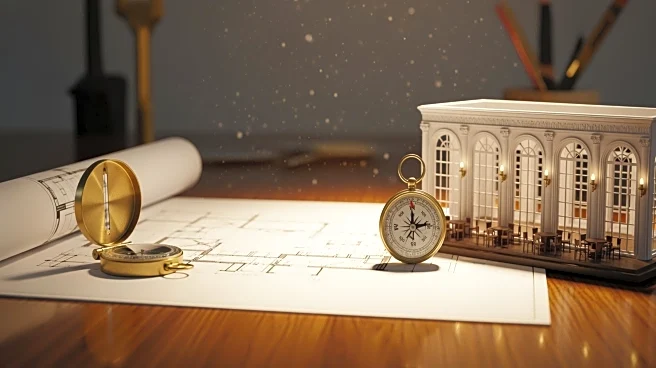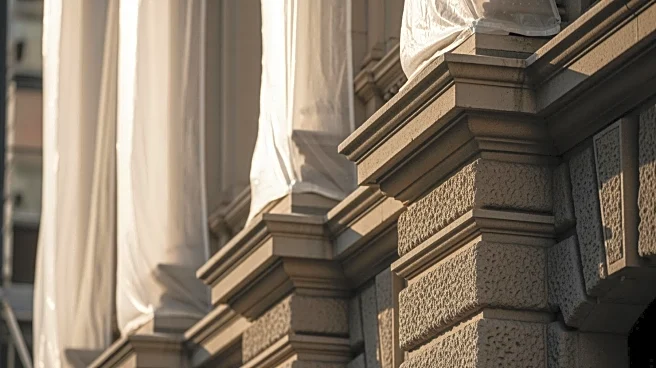What's Happening?
The East Wing of the White House, historically housing the offices of the First Lady and her staff since 1977, was demolished on October 20 to make way for a $300 million ballroom envisioned by President
Trump. This decision has sparked criticism from preservationists and former residents, including former First Ladies Hillary Clinton and Michelle Obama. Clinton expressed outrage over the demolition, emphasizing the historical significance of the structure. Michelle Obama highlighted the importance of the East Wing as the heart of the First Lady's work. The demolition has led to the relocation of several offices, including the White House Calligraphy Office and the White House Military Office, to the Eisenhower Building.
Why It's Important?
The demolition of the East Wing represents a significant alteration to a historic national structure, raising concerns about the preservation of American heritage. Critics argue that the new construction could overwhelm the existing White House architecture, which is a symbol of national identity. The move has also sparked discussions about the role and recognition of the First Lady's office, traditionally seen as a space for significant social and cultural contributions. The decision reflects President Trump's approach to redesigning the White House, which has included other controversial changes such as the addition of a 'Presidential Walk of Fame' and modifications to the Rose Garden.
What's Next?
The construction of the new ballroom is expected to continue, with President Trump emphasizing the need for a complete overhaul of the existing structure. Preservationists and critics may continue to voice their concerns, potentially leading to public debates about the balance between modernization and historical preservation. The relocation of offices may also impact the operations within the White House, as staff adjust to new environments. The National Trust for Preservation has expressed concerns about the scale of the new construction, which could lead to further scrutiny and discussions about architectural integrity.
Beyond the Headlines
The demolition of the East Wing raises broader questions about the cultural and historical value of national landmarks. It highlights the tension between modernization efforts and the preservation of historical sites, which are often seen as symbols of national identity and pride. The decision also reflects the evolving role of the First Lady's office, which has historically been a space for social and cultural initiatives. The changes may influence future administrations' approach to the White House's design and use, potentially impacting how the role of the First Lady is perceived and valued.













